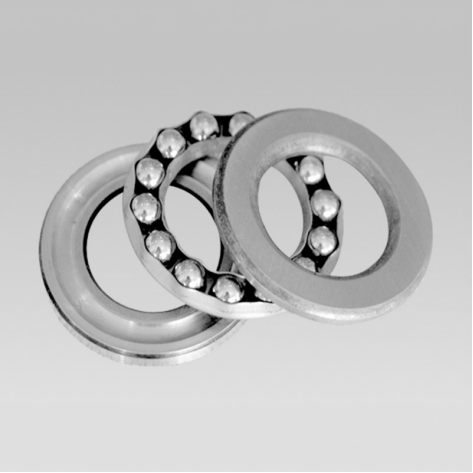
Aug . 22, 2025 15:01 Back to list
Common Failures in Thrust Ball Bearings and Solutions
Thrust ball bearings are vital in machinery handling axial loads, finding use in various thrust ball bearings applications like automotive transmissions and industrial gearboxes. Yet, they face failures due to diverse factors. Xingtai Weizi Bearing Co., Ltd., founded in 2002 in Linxi County, Hebei Province, is a renowned bearing enterprise. As a leading Chinese manufacturer and exporter, it produces thrust ball bearings and more, all meeting ISO9001 standards. With a focus on quality and customization, the company knows well the issues these bearings encounter and offers effective solutions.
Common Failures in Thrust Ball Bearings
- Surface Pitting: Thrust ball bearings often suffer from surface pitting, small craters on raceways or balls. This is caused by repeated high loads exceeding material fatigue limits, poor lubrication increasing friction, or contaminants abrading surfaces. Pitting worsens over time, leading to increased vibration and noise.
- Cage Breakage: The cage, which keeps balls evenly spaced, can break. Reasons include excessive speed making the cage unable to withstand centrifugal forces, improper installation damaging it, or using low-quality materials. A broken cage causes balls to collide, damaging the bearing.
- Overheating: Thrust ball bearingsoverheat due to inadequate lubrication, misalignment causing friction, or overloading. High temperatures degrade lubricants, soften materials, and accelerate wear, reducing bearing life.
Failures Specific to Thrust Ball Bearings Single Direction
- One-Sided Wear: Thrust ball bearings single directionhandle axial loads in one direction. If installed reversely, the unloaded side wears unevenly. This is common in incorrect installations, reducing bearing efficiency and lifespan.
- Axial Play Increase: Over time, thrust ball bearings single directionmay have increased axial play. Causes include wear from long-term use, improper preloading, or material fatigue. Excessive play affects machinery precision, especially in high-precision thrust ball bearings applications
- Ball Spalling: Spalling, the flaking of material from the balls or raceways, is a common failure in thrust ball bearings. It is usually caused by excessive load, improper lubrication, or misalignment. When the bearing is overloaded, the contact stress between the balls and raceways exceeds the material's capacity, leading to the formation of cracks and eventual spalling.
Causes of Failures in Thrust Ball Bearings Applications
- Incorrect Selection: Choosing the wrong thrust ball bearingsfor thrust ball bearings applications leads to failures. For example, using a light-duty bearing in a heavy-load application causes overloading and rapid wear.
- Poor Installation: Improper installation, like misalignment or uneven mounting, increases friction and stress. This is a main cause in many thrust ball bearings applications, as even small misalignments affect performance.
- Lack of Maintenance: Neglecting maintenance, such as infrequent lubrication or failure to clean, allows contaminants to accumulate and lubricants to degrade. This accelerates wear in thrust ball bearings.
- Combined Load Issues: Though some bearings carry radial-axial combined loads, thrust ball bearingsaren’t designed for heavy radial loads. Excessive radial loads in thrust ball bearings applications cause uneven wear and failure.
|
Failure Type |
Main Causes |
Affected Bearing Type |
|
Surface Pitting |
High loads, poor lubrication, contaminants |
All thrust ball bearings |
|
One-Sided Wear |
Reverse installation |
Thrust ball bearings single direction |
|
Overheating |
Inadequate lubrication, misalignment, overloading |
All thrust ball bearings |
Solutions to Prevent Failures in Thrust Ball Bearings
- Correct Selection: Pick thrust ball bearingsbased on thrust ball bearings applications requirements, considering load, speed, and environment. Consult Xingtai Weizi Bearing Co., Ltd. for guidance to match bearings to needs.
- Proper Installation: Follow installation guidelines. Ensure alignment, even mounting, and correct orientation, especially for thrust ball bearings single direction. Use proper tools to avoid damage.
- Regular Maintenance: Maintain thrust ball bearings Lubricate with suitable lubricants, clean to remove contaminants, and inspect for wear. This extends life in thrust ball bearings applications.
- Handle Combined Loads Carefully: In applications with radial-axial combined loads, use appropriate bearings. For thrust ball bearings, limit radial loads to prevent failure.
Thrust Ball Bearings FAQS
How to Choose Thrust Ball Bearings for Specific Applications?
Consider load type, magnitude, speed, and environment. For one-direction axial loads, use thrust ball bearings single direction. For heavy loads, select high-load-capacity bearings. Xingtai Weizi Bearing Co., Ltd. can advise on suitable options for thrust ball bearings applications.
Can Thrust Ball Bearings Single Direction Handle Reversed Loads Temporarily?
No. Thrust ball bearings single direction are designed for one direction. Reversed loads cause severe damage. Use double-direction thrust bearings for bidirectional loads.
How Often Should Thrust Ball Bearings Be Lubricated?
Lubrication frequency depends on thrust ball bearings applications, speed, and environment. Generally, lubricate every 100 - 500 operating hours. Check lubricant condition regularly; replace if contaminated or degraded.
What Are the Signs of Imminent Failure in Thrust Ball Bearings?
Thrust ball bearings Signs include unusual noise, vibration, overheating, increased play, or visible wear like pitting. Address these promptly to avoid machinery damage.
Can Thrust Ball Bearings Be Repaired After Failure?
Minor wear may allow repair, but severe damage like pitting or cage breakage requires replacement. It’s safer to replace failed thrust ball bearings to ensure reliability in thrust ball bearings applications.
Latest news
-
In-Depth Guide to 6003z Bearing Dimensions: Specs, Applications & Vendors
NewsNov.23,2025
-
Understanding the 6201 Z Bearing - Specifications, Applications, & Future Trends
NewsNov.23,2025
-
Everything You Need to Know About 6001 C3 Bearing – Specs, Uses, and Advantages
NewsNov.22,2025
-
6208 zz Bearing – Key Technical Insights, Applications & Vendor Comparison
NewsNov.22,2025
-
Everything You Need to Know About the 61906 Bearing | Features, Applications & Vendors
NewsNov.22,2025
-
Comprehensive Guide to 6201z 12.7 Bearing – Specs, Uses & Vendors | Ary Bearing
NewsNov.21,2025

